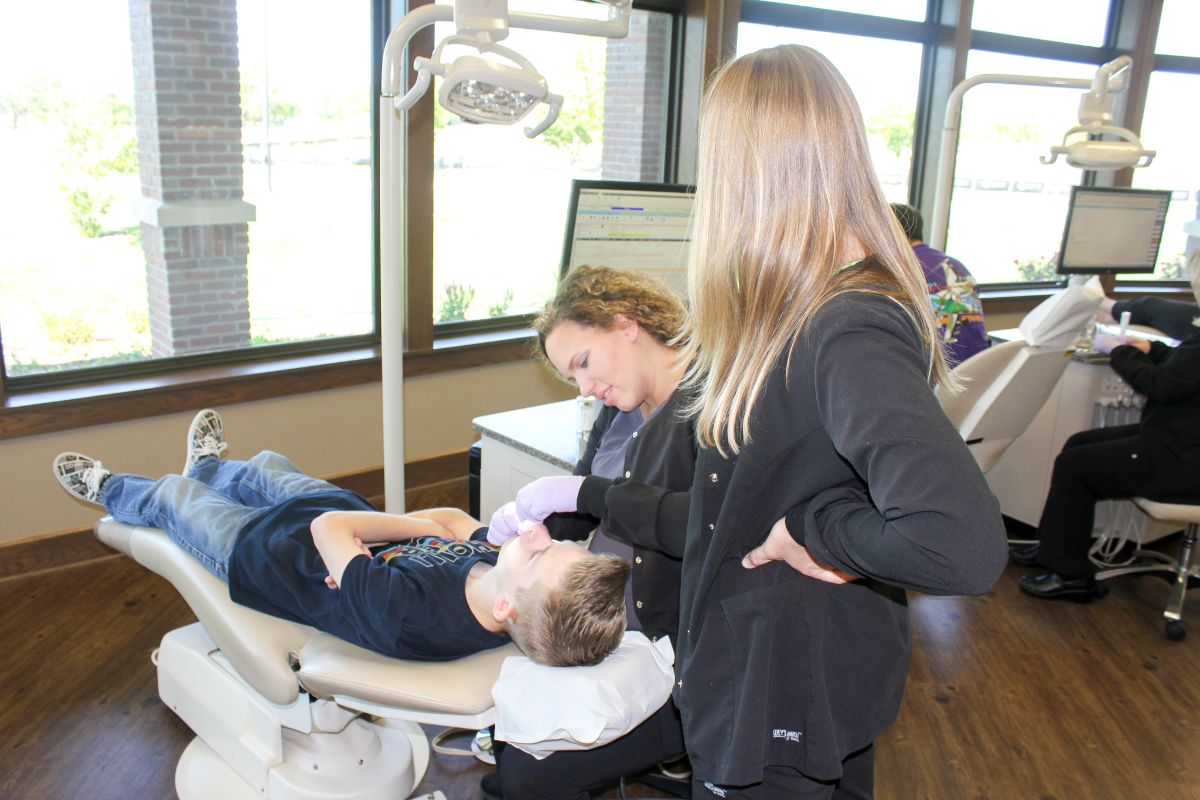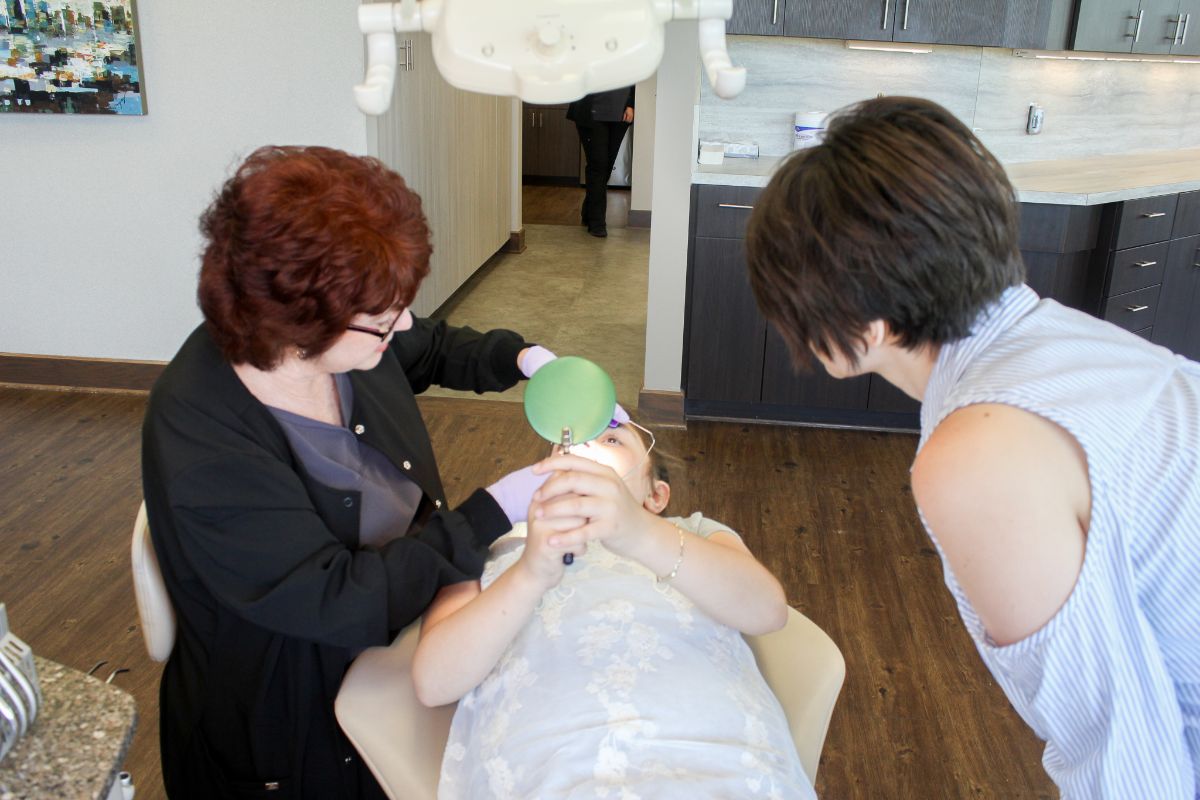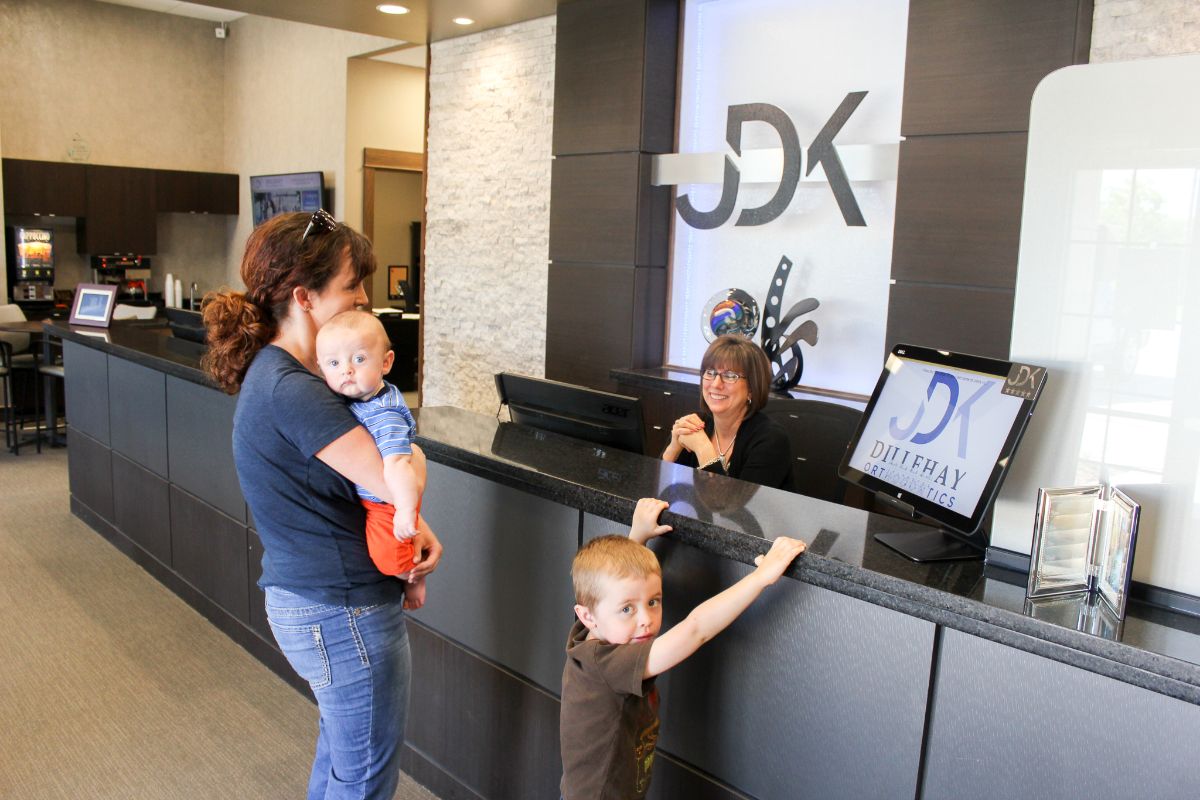As a mom, your skills are in constant demand. Whether you’re acting as a cook, chauffeur, storyteller, accountant, or event planner, your family depends on you to keep life at home functioning smoothly. We salute your ability to balance work, school, and extracurriculars so effectively! But wouldn’t it be nice to take a backseat every once in a while? When it comes to your child’s smile, that’s exactly what we invite you to do! Even though you’re a pro in every other area of your child’s life, their oral health requires the kind of expertise and guidance that only a qualified orthodontist can provide.
That’s where come in! Becoming an orthodontist requires several years of additional education and training after dental school, giving them special skills in tooth movement, facial growth, and dental development. Dr. Dillehay and Dr. JK have many years of education and experience between them! Though you may not be an expert on orthodontics, they are, and that’s why you can trust Dillehay Orthodontics to give your child a beautiful, healthy smile that lasts.
Because orthodontic care is such an investment in your child’s oral health, we take the trust you place in us seriously. We want both you and your child to feel fully confident in the journey ahead, so let’s take a look at some of the top things you should know about the orthodontic process before your child begins treatment!
Children should have an initial orthodontic evaluation by the age of 7
Although many people associate orthodontics with teens in braces, patients of all ages benefit from improved oral health, including young children. That’s why the American Association of Orthodontists recommends kids have their first orthodontic exam by about the age of 7. Because their mouths are still developing and they still have baby teeth at this age, an early examination gives us the chance to spot any potential problems before they have the chance to become more serious. This can lessen, or even eliminate, any negative impact on your child’s permanent teeth and bite.
We treat many children here at Dillehay Orthodontics, and we’ve seen the difference preventive care can make. Starting treatment at the right time can have a big impact on a child’s oral health, both now and in the future. Although most children won’t require any active treatment at first, an early exam lets us determine if orthodontic treatment is likely in the future, and when it would be most advantageous to begin.
Orthodontics is about more than straight smiles
There’s a common misconception that orthodontics focuses mostly on straightening smiles, and not much else, but we’re actually able to address crooked teeth, misaligned jaws, and a great deal more!
Straight teeth aren’t the only indicator of a healthy smile, which mean orthodontists must learn how to diagnose, prevent, and correct malpositioned teeth and jaws. By examining a patient’s teeth, the movement and growth of their jaw, and the way the teeth are developing, we’re able to catch any impacted, missing, or overcrowded teeth that may otherwise go unnoticed. This means that we can correct issues before they become bigger problems that require more serious or invasive treatment later on in life.
Choose an orthodontic office your family is comfortable with
Depending on the type of treatment, you can expect your child to spend quite a bit of time in the orthodontist’s office. Most patients will be seen about once every 6-12 weeks or so, depending on the type of appliance and the specifics of their treatment plan. It’s important to find an office that you and your child feel comfortable with since you’ll be visiting it so regularly!
With three conveniently located offices to choose from, we’re able to provide our patients with a safe, welcoming, and stress-free environment. We utilize the latest technology and most innovative treatments in order to offer top-notch customized care. You and your family will be greeted warmly at every appointment, and you can count on us to always go the extra mile to make you feel valued and heard.
There are multiple treatment options available
Dillehay Orthodontics combines cutting-edge techniques and technology with customized treatment plans to offer patients results they can be proud of! The following treatments are available in all of our offices.
Traditional metal braces
Traditional metal braces are the most common type of braces and are more comfortable today than ever before. Made of high-grade stainless steel, metal braces straighten your teeth using metal brackets and archwires. With metal braces, you have the option of adding colored elastics (rubber bands) for a more unique and colorful smile.
Self-ligating braces
Self-ligating braces are made from the same materials as traditional braces, but do not require the use of elastics, meaning fewer appointments and less friction being placed on the tooth. Self-ligating braces come with traditional metal, ceramic, or clear brackets. They are the same size as metal braces, but use a specialized clip in place of elastics to help the archwire guide teeth into place. The clip helps reduce the amount of pressure being placed on the tooth, and requires fewer adjustments because there are no elastics to replace.
Ceramic braces
Ceramic braces are made of clear materials and are therefore less visible on your teeth than metal braces. For this reason, ceramic braces are used mainly on older teenagers and adult patients who have cosmetic concerns. While they are visually less prominent, they do require more attention to oral hygiene as ceramic braces are larger and are more brittle than their metal counterparts. For these reasons, ceramic braces tend to be used more on upper front teeth than on lower teeth.
Invisalign clear aligner therapy
Unlike traditional braces, which are a fixed orthodontic appliance, Invisalign uses a series of clear, customized aligners to move the teeth over time. Because these aligners are nearly invisible and completely removable, they give patients extra freedom and flexibility. The soft but strong thermoplastic resin they are made of also helps patients avoid some of the friction and abrasions that braces can cause. As the teeth begin to shift, the aligners will be changed out every 1-2 weeks to keep up with the movements.
It’s important to note that the Invisalign system relies almost entirely on patient compliance to work. The aligners must be worn a minimum of 20-22 hours every day, throughout the course of treatment, in order to achieve the desired results. Invisalign tends to work best for mild to moderate orthodontic issues, so it may not always be a suitable choice for patients with more severe or complicated cases.
Treatment times vary on a case-by-case basis
There’s no “one size fits all” answer when it comes to how long a patient will be in braces or aligners. The length of time that your child will require treatment will depend on their specific case, the severity of the problem, the health of their teeth, gums, and supporting bone, and how compliant they are. Each case is different, and every patient responds to treatment in their own way, but we will say that braces tend to be worn for about 12-24 months on average, while Invisalign treatment is usually around 12-18 months.
Give your child the gift of a beautiful smile with Dillehay Orthodontics
As a mom, we know that you want nothing but the best for your child, including a healthy smile that will last them a lifetime! If you have a child who is age 7 or above, we’d love to schedule them for their first orthodontic exam with our talented team. Get in touch today for a FREE consultation!


